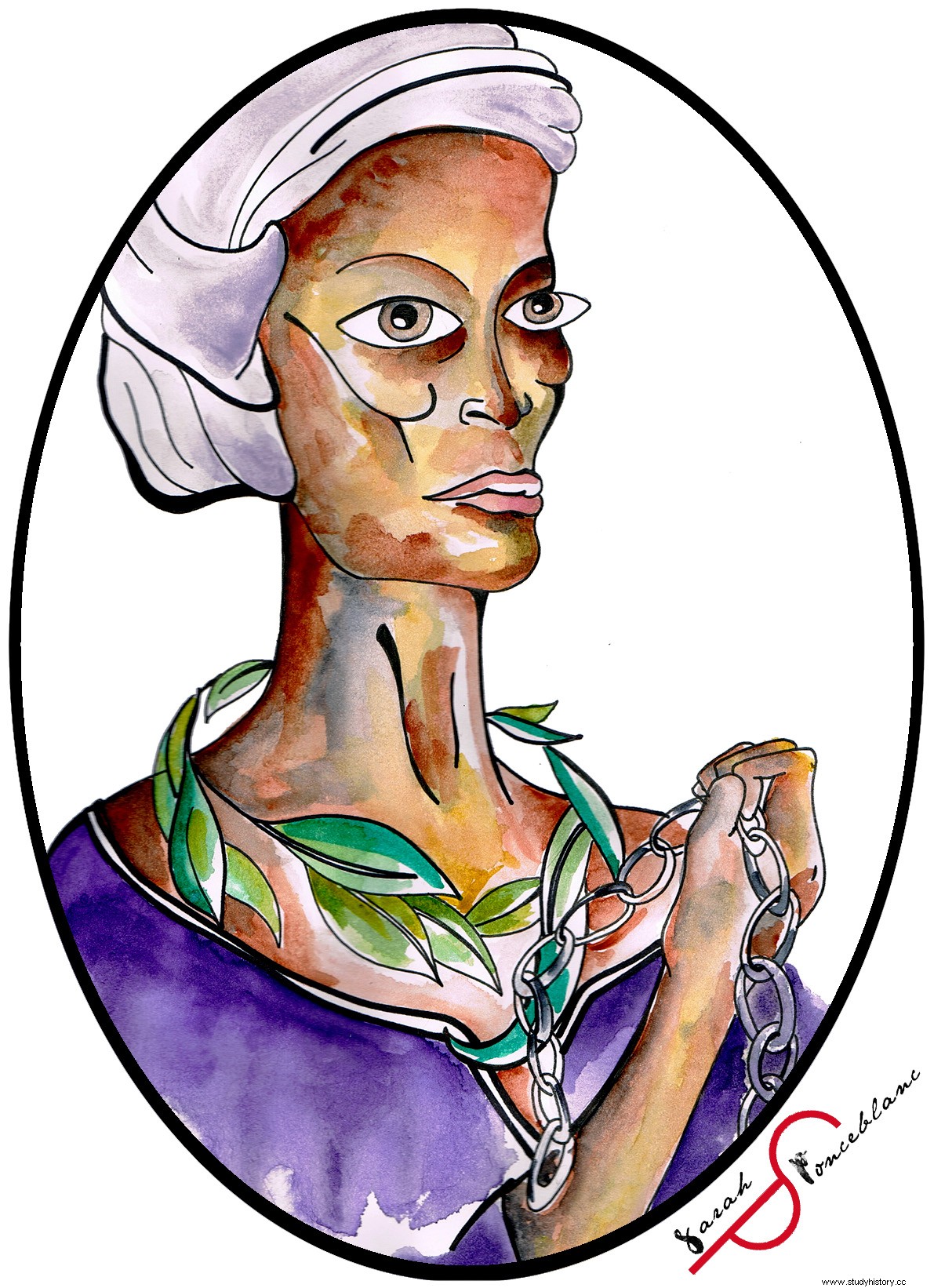Nanny or Queen Nanny (about 1685 – 1733 or 1760) is a Jamaican heroine, an emblematic figure of the resistance of the Jamaican maroons.
Runaway slaves

Many accounts of Queen Nanny's existence come from oral sources and historical documents. Nanny was born around 1685 or 1686 in Ghana, in the Ashanti tribe. Following inter-tribal conflicts, the members of his villages are captured; she and some of her neighbors are sold as slaves and sent to Jamaica to work in the sugar cane crop. It is probably sold to a plantation near Port-Royal, to work there in particularly difficult conditions.
Influenced by runaway maroons, former slaves, Nanny and four of her companions – Accompong, Cudjoe, Johnny and Quao – fled their plantation to take refuge in the Blue Mountains, a mountain range in eastern Jamaica. /P>
Nanny Town
In the Blue Mountains, the five former slaves split up and founded, in strategic locations, maroon communities:Nanny Town, Accompong Town, Cudjoe Town. Fleeing at the time of the Spanish occupation, around 1650, then at the time of the arrival of the British a few years later, the maroons are already numerous in Jamaica. Reputed to be good fighters, they pose serious problems for the settlers. Wishing to organize these communities, Nanny and her companions also aim to free more slaves, and they occasionally organize rescue operations. In thirty years, Nanny would have freed more than 800 slaves. In doing so, they quickly become heroes of the people.
The community of Nanny Town is set in a strategic location in the Blue Mountains, on a ridge and overlooking a river. The maroons live there from breeding, agriculture, hunting and trade. They also sometimes carry out operations in the plantations to, in addition to freeing the slaves, seize the goods of the slaveholders. Quickly, British troops attempt to storm the town of Nanny Town, as well as other communities, but they fail. The choice of the location of the city makes it a difficult place to besiege, the maroons are good fighters, and Nanny a fine strategist. Knowing the terrain better and using tricks and traps, the Maroons repulsed the British assaults.
Nanny, the rebellious woman Obeah
In her community, many credit Nanny with Obeah powers, occult magic derived from African religion. Legend has it that she had British soldiers fire on her to mock them, the bullets sliding past them. A healer, she had knowledge of healing herbs and traditional treatment.
The date of Queen Nanny's death remains a mystery. The Journal of the Assembly of Jamaica of March 29-30, 1733 mentions Captain Sambo, a black slave who fought the Maroons, as “loyal slave” , for "killing Nanny, the rebel wife Obeah" . According to the newspaper, the man killed the Maroon leader during an assault on Nanny Town. Most of the town's maroons then joined other communities and Nanny Town was taken by the British the following year. However, other sources mention an “old rebel Obeah” and believe that Nanny did not die in battle in 1733 but died naturally around 1760.
A heroine of Jamaican history, Nanny is celebrated as such. It appears in particular on the 500 Jamaican dollar bills.
